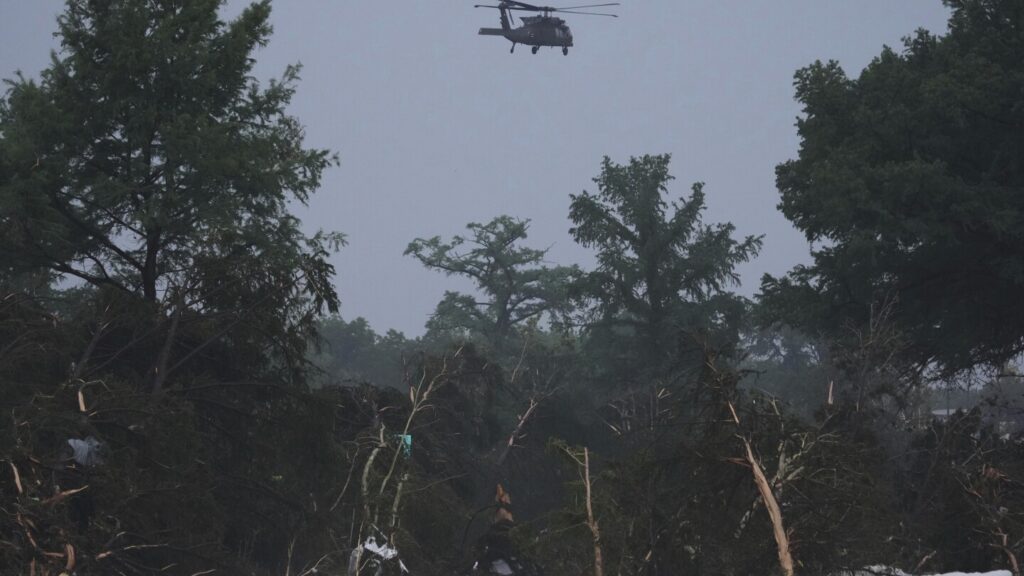
The swift-moving flood that swept through the Hill Country of Texas on Friday has tragically claimed the lives of at least 27 individuals, with many more reported missing. Among those unaccounted for are over 20 girls attending a summer camp. This devastating event underscores the lethal nature of flash floods, the leading cause of storm-related fatalities in the United States. Authorities have reported that approximately 850 people have been rescued, some with the aid of helicopters.
Flash floods are notorious for their rapid formation. According to the National Weather Service, these floods can begin within six hours, and often as quickly as three hours, following heavy rainfall. The sudden rise in water levels often catches people off guard, particularly those traveling or residing in vulnerable areas. This was precisely the case for residents along the Guadalupe River in Kerr County, where early Friday morning, the skies unleashed more than 10 inches (25 centimeters) of rain.
Rising Waters and Immediate Impact
The fast-moving waters of the Guadalupe River surged 26 feet (8 meters) in just 45 minutes before dawn, sweeping away homes and vehicles. The threat persisted as forecasts predicted additional heavy rains for Saturday, prompting continued flash flood warnings and flood watches across central Texas.
On Thursday afternoon, the National Weather Service had issued a flood watch, anticipating water levels to rise by up to 7 inches (17 centimeters) in certain areas. A flood watch indicates favorable conditions for flooding, urging people to prepare, although hazardous conditions may not necessarily develop. However, the situation escalated overnight as the watch was upgraded to a flood warning, impacting 30,000 residents. A warning is issued when flooding is imminent or already occurring, according to the weather service.
Preparedness and Response
Lt. Gov. Dan Patrick emphasized that the potential for heavy rain and flooding covered a vast area, and efforts were made to alert the public. “Everything was done to give them a heads-up that you could have heavy rain,” he stated. However, when questioned about local notification systems in Kerr County, Judge Rob Kelly, the county’s chief elected official, admitted, “We do not have a warning system.” When pressed on why more precautions weren’t taken, Kelly responded, “Rest assured, no one knew this kind of flood was coming.”
The Lethal Nature of Flash Floods
Flash floods are a formidable threat, claiming 145 lives last year alone, as reported by the weather service. Over the past 30 years, floods have averaged 127 fatalities annually. A significant portion of these deaths occur in vehicles, with nearly half of all flood-related fatalities involving cars. Many people underestimate the danger, not realizing that a vehicle can become uncontrollable in just 6 inches (15 centimeters) of water and can be swept away in as little as 18 inches (46 centimeters).
“The normally tranquil streams and creeks in your neighborhood can become raging torrents if heavy rain falls overhead,” warns the National Weather Service.
Flash Floods: A Nationwide Threat
Flash floods can occur anywhere across the nation, affecting both rural areas and large cities. They can even happen without direct rainfall if an area is downstream from a torrential storm. Hurricanes, tropical storms, non-cyclonic weather systems with heavy rain, and dam failures are among the events that can trigger flash flooding.
The recent disaster in Texas serves as a stark reminder of the unpredictable and deadly nature of flash floods. As communities begin to recover and rebuild, the focus will likely shift to enhancing warning systems and improving public awareness to better prepare for future incidents.
As the situation develops, authorities continue to search for the missing and provide aid to those affected. The coming days will be crucial in assessing the full impact of the floods and implementing measures to mitigate the risks of future catastrophes.






